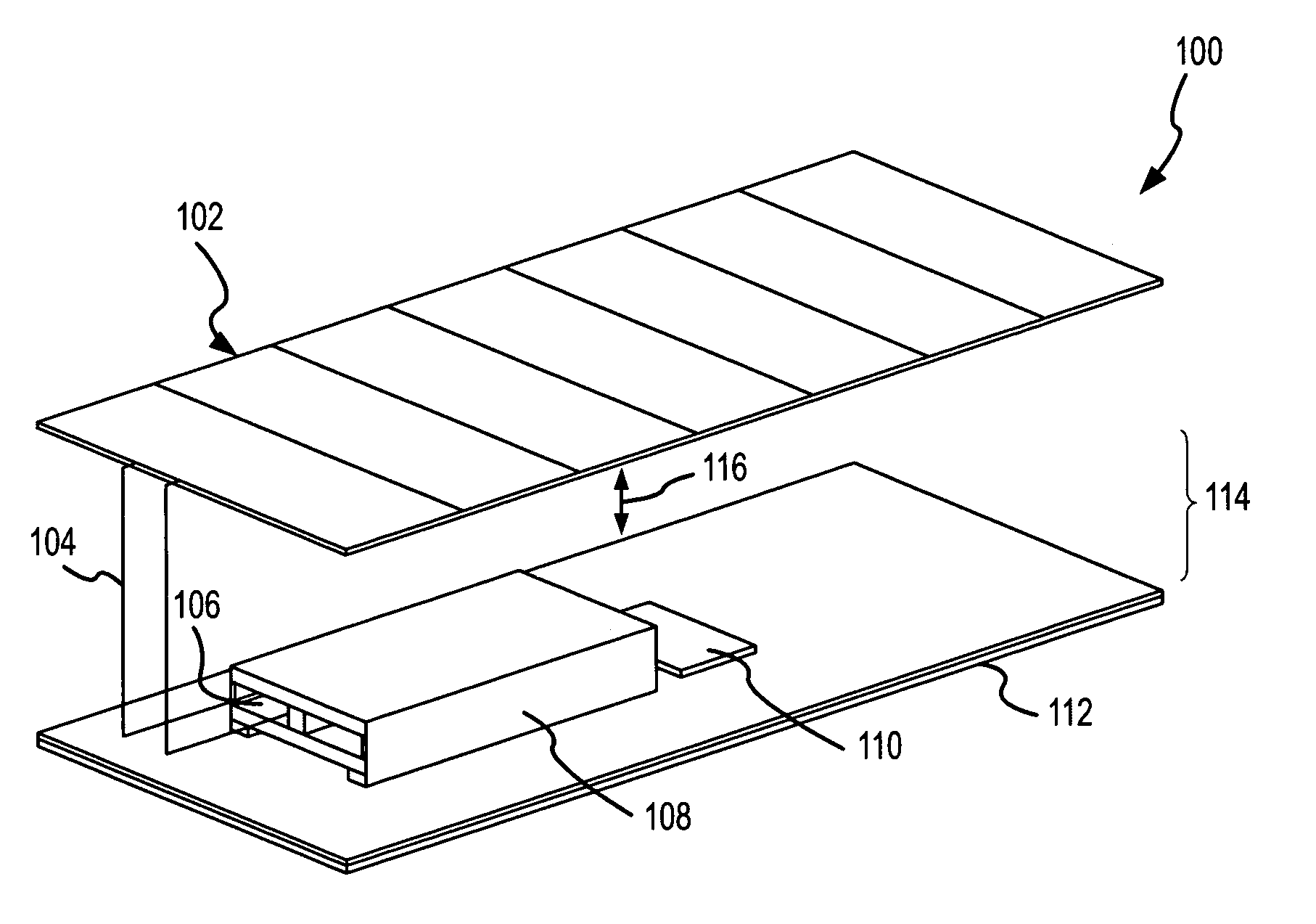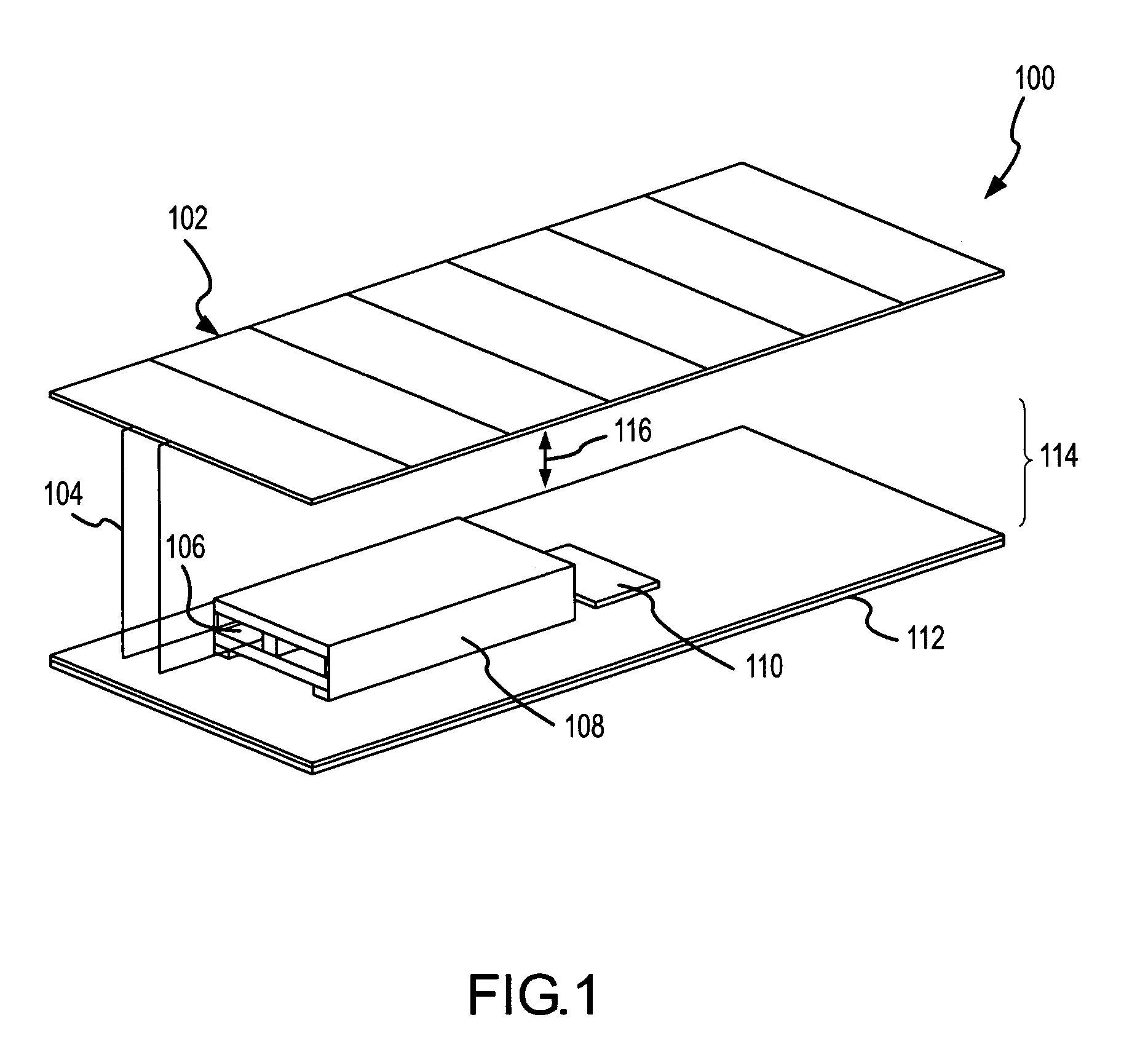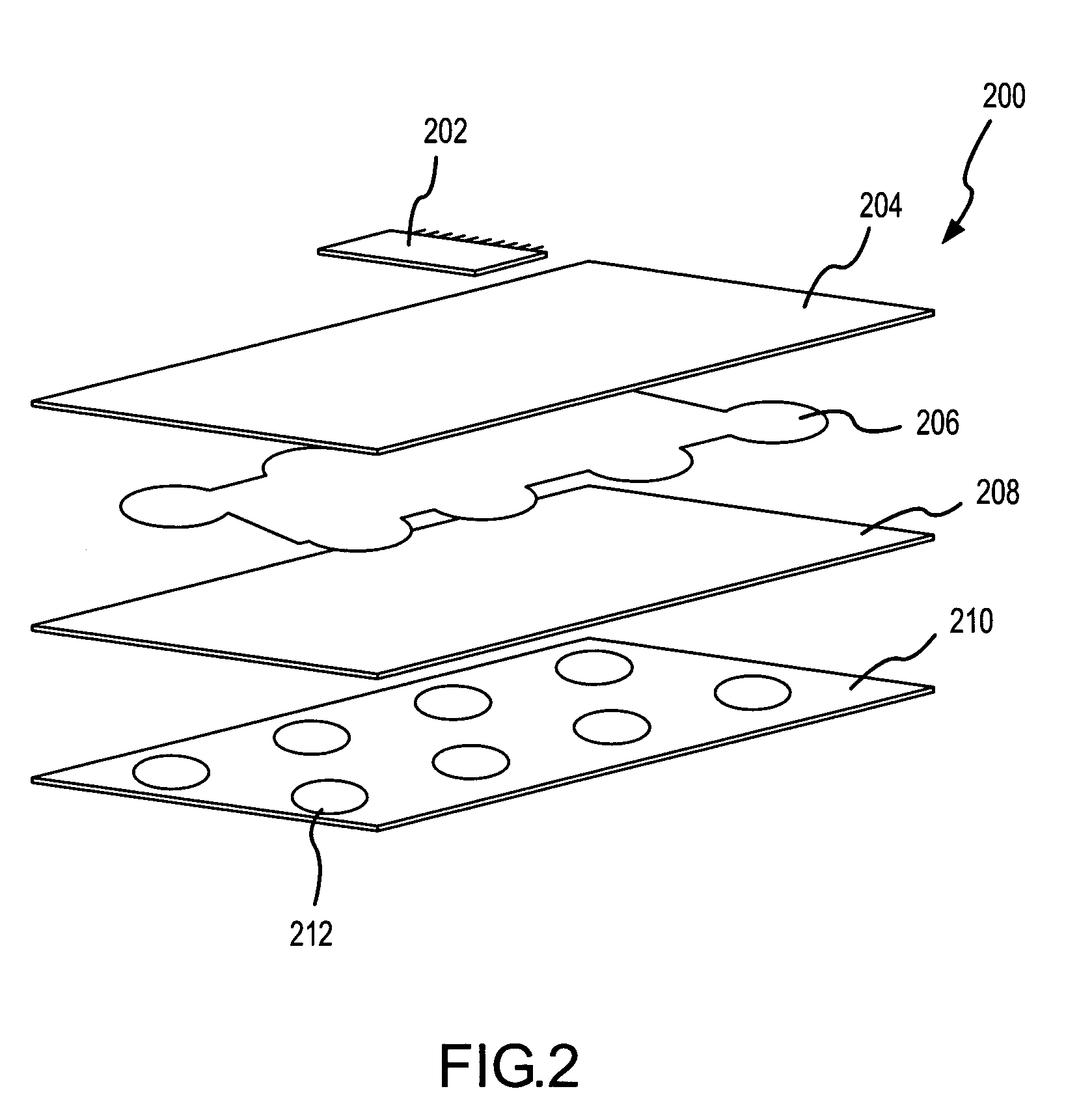Passive thermal control system
- Summary
- Abstract
- Description
- Claims
- Application Information
AI Technical Summary
Benefits of technology
Problems solved by technology
Method used
Image
Examples
Embodiment Construction
[0024]The present invention is directed to a passive thermal control unit and associated systems and methodology relating to thermal dissipaters associated with equipment requiring a narrow temperature range in which to function. In the following description, the invention is set forth in the context of an integrated cell unit for spacecraft applications. It will be appreciated that the invention has particular advantages in such contexts as it enables simple, reliable, lightweight and passive operation in a space environment. However, it will be appreciated that various aspects of the present invention are more broadly applicable to other passive thermal control applications.
[0025]Referring to FIG. 1, an integrated cell unit 100 in accordance with the present invention is shown. The integrated cell unit 100 can be used to implement the concept of distributed power for phased array antennas including ultra-large phased array antennas, e.g., having areas on the order of about hundred...
PUM
 Login to View More
Login to View More Abstract
Description
Claims
Application Information
 Login to View More
Login to View More - R&D
- Intellectual Property
- Life Sciences
- Materials
- Tech Scout
- Unparalleled Data Quality
- Higher Quality Content
- 60% Fewer Hallucinations
Browse by: Latest US Patents, China's latest patents, Technical Efficacy Thesaurus, Application Domain, Technology Topic, Popular Technical Reports.
© 2025 PatSnap. All rights reserved.Legal|Privacy policy|Modern Slavery Act Transparency Statement|Sitemap|About US| Contact US: help@patsnap.com



